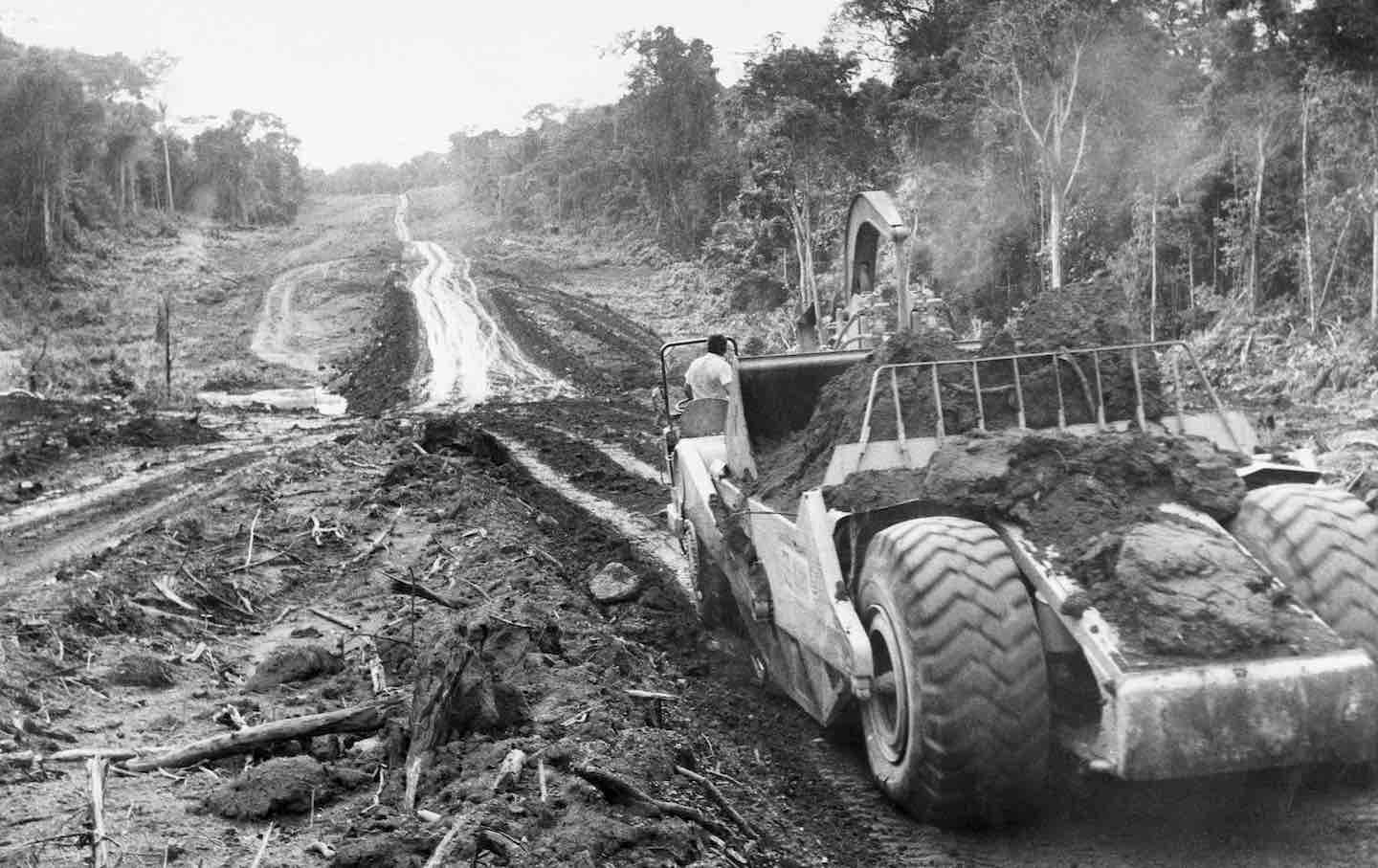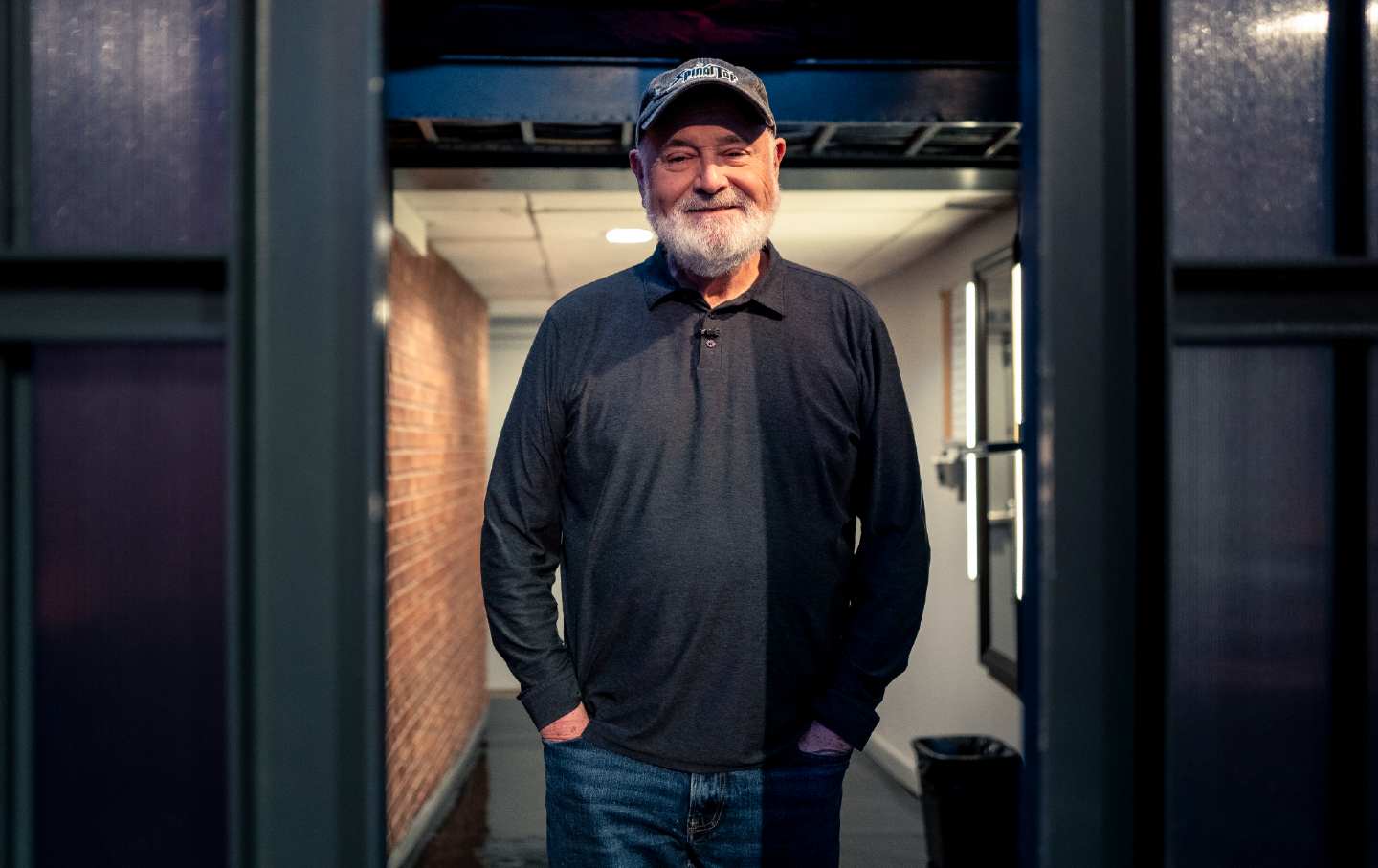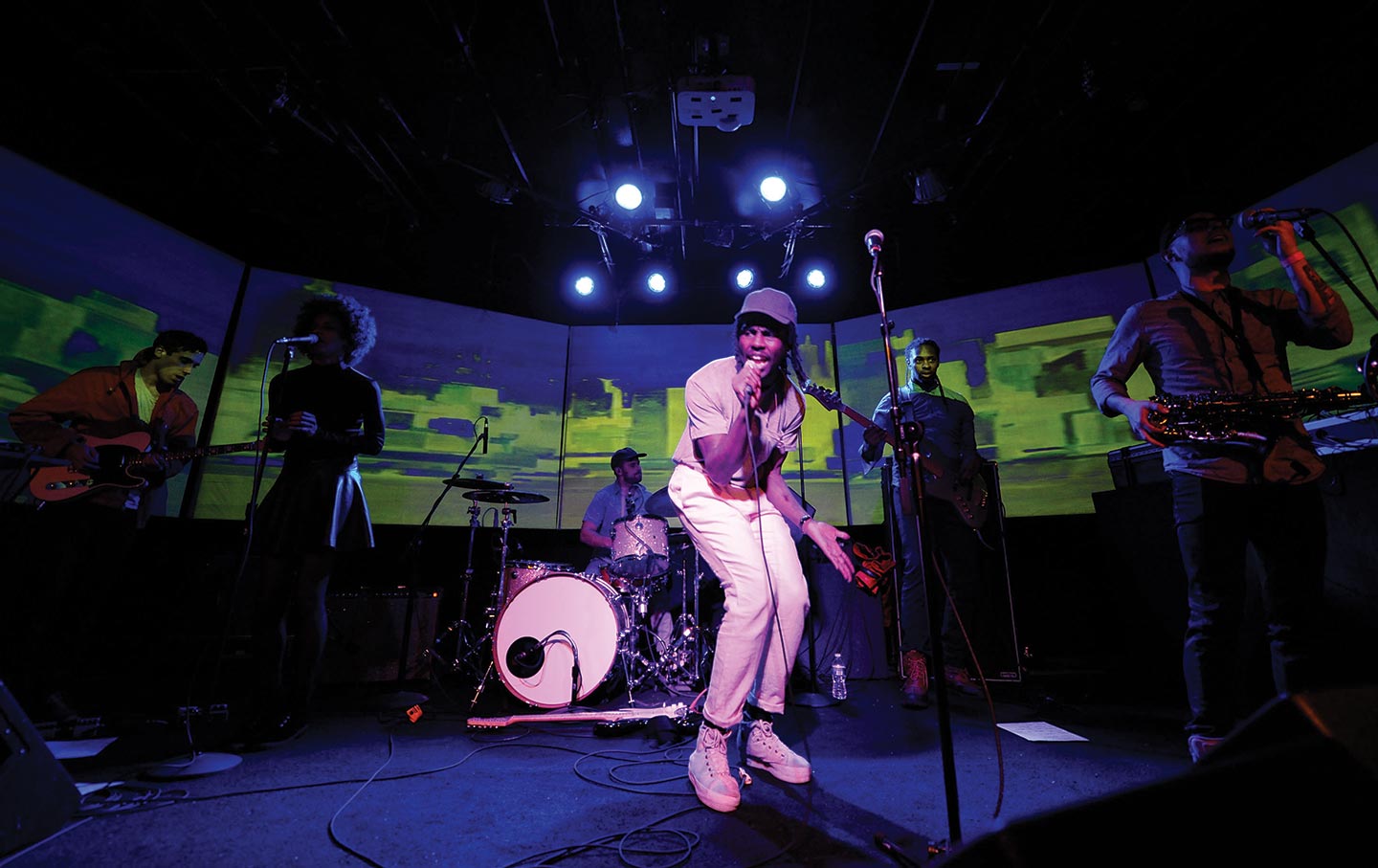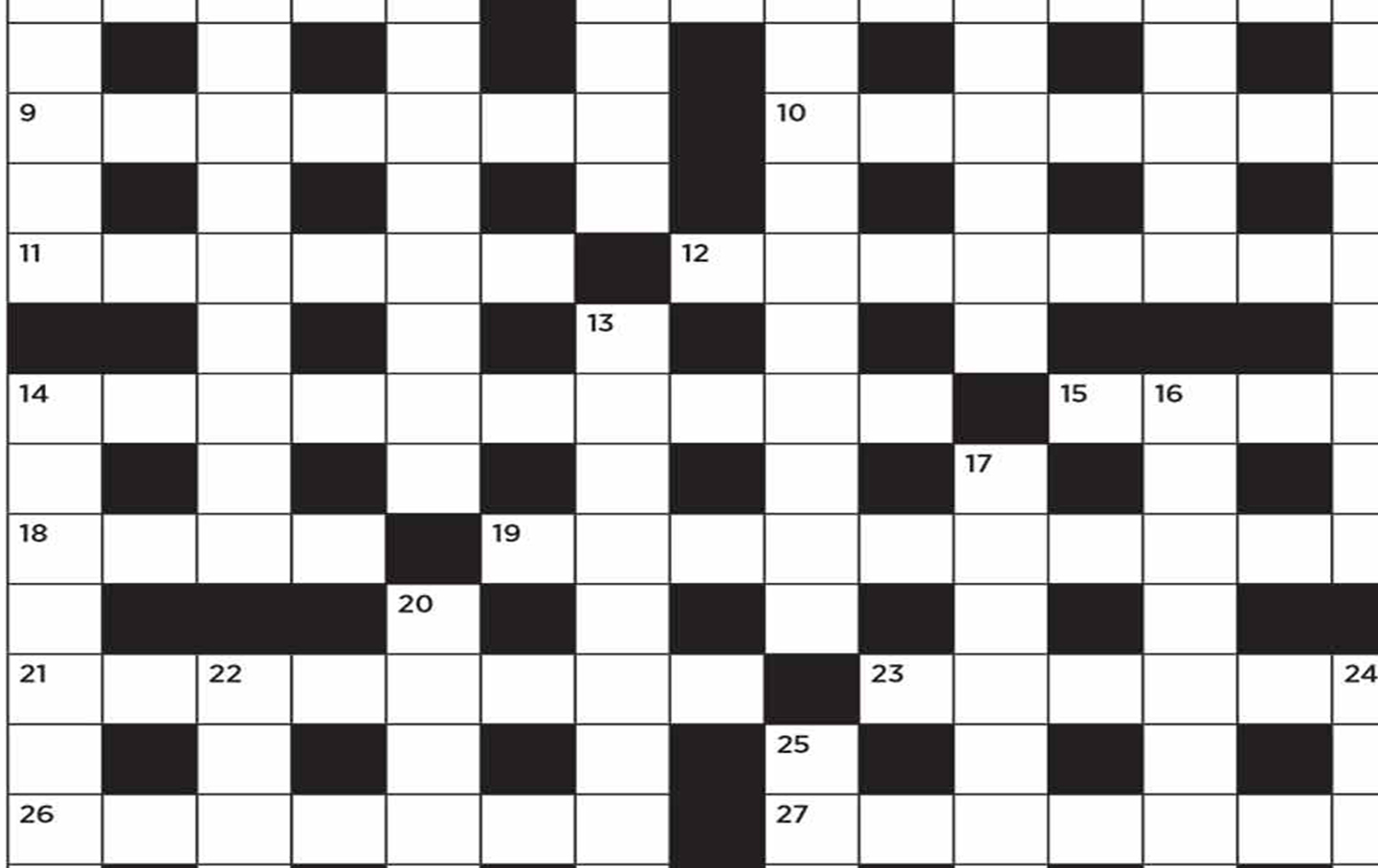Is It Time to Imagine a World Without Roads?
Be it highway or dirt track, our infrastructure has become an ecological disaster. Ben Goldfarb’s Crossings catalogs the devastation.

Trans Amazon highway construction near Altamira Brazil, 1971.
(Courtesy of Bettmann / Getty Images)In the 1970s, Brazil’s military dictatorship began construction on the Trans-Amazonian Highway, a 4,000-kilometer-long project that punched through the heart of the world’s largest rainforest. As the highway and associated roads made their way into the tropical wilds, “the corrosive forces of heat, light and wind rushed in and stricken trees dropped leaves to conserve water,” writes Ben Goldfarb in his new book, Crossings: How Road Ecology Is Shaping the Future of Our Planet. “The brittle branches and crispy leaf litter fueled groundfires, which opened more gaps, which killed more trees, which created more kindling, which ignited more fires—a fatal feedback loop that far transcended the dirt road that triggered it.” Beyond the fires, the highway facilitated the invasion of ranchers, miners, and non-native species, spurred outbreaks of malaria and other infectious diseases, and was a disaster for the region’s Indigenous tribes. “The best thing you could do for the Amazon,” Goldfarb adds later, quoting a scientist, “is to bomb all the roads.”
Books in review
Crossings: How Road Ecology Is Shaping the Future of Our Planet
Buy this bookThis Brazilian highway project is a paradigmatic example of the “infrastructure tsunami” that has engulfed our world, wiping out animals, splintering forests, and harming humans, too. Roads, in particular, are the core of the catastrophe, and they are the central subject of Goldfarb’s study. Whether urban highways or half-forgotten rural roads, these ubiquitous ribbons of cement, gravel, or mud exert a profound influence, Goldfarb contends, on everything around them. His book is an elegant—at times startling—account of how our built environment has become an environmental crisis.
“Name an environmental problem, and it’s exacerbated by the access that roads provide and the incentives they create,” he writes. “Roads are stalking horses for despoliation, the foot with which civilization holds ajar nature’s door.” But Crossings, a hybrid of travelogue, history, and scientific narrative, is not just a litany of devastation. Goldfarb digs into the many creative and life-saving interventions that stem from road ecology, an emerging scientific field that studies the relationship between roads, animals, and ecosystems. The book is a manifesto against unnecessary death—one that will help feed a growing understanding that we must make our infrastructure more hospitable to the nonhuman creatures with whom we share this trampled planet.
What do roads do to our world? Goldfarb reports, among other things, that “more birds die on American roads every week than were slain by the Deepwater Horizon oil spill.” According to one scientist cited in Crossings, every year, motor vehicles may flatten as many as 25 million imperiled monarch butterflies in the United States alone. The toll of roadkill, as documented in the book, is staggering, but the impact of automotive infrastructure extends far beyond the roadside dead. Among other things, roads are a major driver of Landschaftszerschneidung, an eminently German word for landscape dissection and fragmentation, the process by which human development locks animals into ever-smaller pockets of suitable habitat and dooms many of them to extirpation or extinction. The trapped and inbred cougars of Los Angeles, the endangered panthers of Florida, the migrating mule deer of Wyoming, have long suffered from this phenomenon, which shows no signs of abating. By some estimates, more than 25 million miles of new road lanes will be built worldwide by the middle of this century—a massive increase.
Road ecology seeks to blunt the tsunami’s impact. From wildlife crossings to society-wide shifts in government policy, this scientific discipline is quietly helping to alter our conception of what and where infrastructure should be. To offer one example, the US Forest Service has initiated a controversial effort to decommission a portion of the 370,000 road miles that it manages in mountains and forests across the country. The agency, Goldfarb reports, is likely the largest road manager in the world, with a vast network of legacy dirt tracks that were built, among other reasons, to satisfy its fanatical (and faulty) 20th-century wildfire suppression policy. Now the Forest Service is returning some of those dirt tracks to nature, a belated but important attempt to mitigate habitat fragmentation, prevent erosion, and heal the land. In Idaho’s Nez Perce-Clearwater National Forest, home to one of the country’s largest wilderness areas, some 500 road miles have been erased from the map.
Crossings could easily have been a dull and depressing read, full of statistics and policy prescriptions. But Goldfarb’s well-paced prose and good humor keep the book lively and often fascinating. His particular specialty is the ability to introduce readers to the wonders of ecological and biological processes, even in the context of dire environmental change. He opens with a charming account of how cliff swallows have adapted to take advantage of the overpasses that stud America’s highways. Finding such overpasses amenable to the construction of their hanging mud nests, the birds have moved in: They live their lives above bustling highways, gobbling insects as cars and trucks race down the road. As a result of the swallows’ new roadside lifestyle, evolution has remade their bodies. Scientists find that their wings have become shorter over time, allowing them to more easily dodge speeding vehicles; the number of cliff swallows killed in collisions has dropped accordingly. These birds are so enmeshed in our steel-and-concrete world, Goldfarb writes, “that our infrastructure [has] infiltrated their DNA.”
In Goldfarb’s telling, even the most mundane things are more than they appear. Poorly designed culverts—those tubes and tunnels that facilitate the flow of water through roadbeds—can trigger a salmon holocaust, and so we learn about efforts to remove and improve them and thereby facilitate salmon survival in the Pacific Northwest. Migrating mule deer are carriers of cultural and topographical knowledge—they cultivate maps of the landscape in their minds and pass the knowledge to their children—and so we follow urgent efforts to make Wyoming’s highways passable to these animals. A road is never just a road: It is also a symbol of—and often a battlefield for—fierce cultural conflict, especially in the American West.
Goldfarb wades into some of these cultural conflicts himself. Toward the middle of Crossings, he issues a rousing defense of wilderness, that stodgy old conservation ideal that has led to the permanent protection of millions of acres of public land across the United States over the last century. The wilderness movement, inspired by the great conservation writer Aldo Leopold (among others), has suffered tendentious disparagement in recent years. Various political factions have portrayed wilderness protection as a product of misguided idealism or, worse, as either some big-government scheme or some white supremacist plot to control land. But Goldfarb sees things more clearly.
The protected wilderness areas of the world, he argues, are not mere abstractions that modern societies have imposed on nature in order to recapture a little taste of lost Edenic purity or to further some misguided or oppressive agenda. No, above all, wilderness areas are actual places (Idaho’s Selway-Bitterroot, for example) where actual laws and regulations (the Wilderness Act of 1964, etc.) protect large intact landscapes from road-building and other forms of intrusive development. “As an abstraction, wilderness is passé,” Goldfarb writes. “But as a physical place—a landscape category defined by roadlessness—it’s more vital than ever.” Crucially, “roadless areas are planetary buffers against extinction: a species that resides within a wilderness is more than twice as likely to survive as one in the hellscape beyond.”
I should confess, at this point, to having a preordained interest in all things automotive. I grew up in southeastern Michigan, in a family that worked in the auto industry for multiple generations. My entire life was shaped by the Rouge River plant, Ford and GM, the vast constellation of industrial power that won a world war and gave rise to 20th-century American prosperity. And I’m hardly alone in that. Our world is built around cars, especially in the United States. And there is a pleasure to this way of life. My 13-year-old Ford Focus has crossed the country multiple times, from the chaparral flanks of Mount Tamalpais to the manic streets of Manhattan. It’s a sleek little enabler of freedom, exploration, work, play (and, yes, carbon pollution), and I am very fond of it.
Crossings is no Manichean morality tale in which roads are always and everywhere evil. Among other things, Goldfarb elaborates on an insight that Leopold made many decades ago, when he observed that the last remnants of the Midwestern prairie survived on strips of roadside land that the plows and tractors had spared. This insight still holds true today: Roads generate their own ecological processes, sometimes beneficial. They offer, for instance, a “Whole Foods for the necrophagous set,” a smorgasbord of roadkill for the benefit of vultures and other carrion eaters. Goldfarb is comfortable navigating the nuances and contradictions of our booming car culture. He acknowledges that our auto-centric infrastructure has its critical uses as well as its joys, and his book is better for it.
Still, our greatest inventions wreak incalculable damage; our most banal actions deal death. We are biased toward error, as Marilynne Robinson likes to say. Our trips to the grocery store, our camping vacations, our commutes, our package deliveries and industrial transport, are the source of a vast “biological annihilation.” Who is to blame? Who bears the moral and spiritual responsibility for all of this? This is a question into which Goldfarb might have delved a bit deeper.
Popular
“swipe left below to view more authors”Swipe →Near the end of the book, he writes: “We came to rely on cars not by personal choice but by corporate design,” and then he goes on to describe the highway lobby that has molded American automotive policy for the last 50 years. He asks at one point, “What could be more American than blaming deep-rooted problems on individual failings rather than corporate power structures?” I share Goldfarb’s belief that the highway lobby has shaped the American transportation system in a nefarious and self-serving fashion and that it should be scrutinized and reined in. Indeed, I would have liked him to probe the structure and activities of this lobby a bit more. But I am also loath to let us individuals off the hook too easily.
As with fossil fuels, huge numbers of people have benefited from car culture, participating in it daily, willingly, and often enthusiastically. We have agency here, and yet most of us are far too inured to the toll that our automotive activities take on the world around us—a fact Goldfarb clearly recognizes and, in fact, seeks to remedy. We ought to face up to our own responsibility, to the moral dilemma in which we find ourselves. Even with the best intentions, we do damage. Just look at the green-energy economy we are erecting right now—it may not pollute the atmosphere with greenhouse gases, but the mines, roads, and vast solar farms that it requires do their own considerable harm to the natural world. Just look at a place like Nevada, where undeveloped deserts and basins are being industrialized in unprecedented fashion in the name of green energy. It’s the human conundrum: We can’t help but hurt the world, especially in this age of consumerism and global interconnection. We poor sinners should look our failings squarely in the face and work to lessen the damage on an individual basis as well as a policy and political one.
By Goldfarb’s own account, many people are doing just that. Quiet heroes are furthering the cause of road ecology every day; people acting alone or in concert are laboring to lessen the damage. There are the two gay men in Tasmania who are part of a network of wildlife “carers”—people who go out in search of female marsupials dead on the side of the road, extricate the still-living children from their mothers’ pouches, and raise them as their own. There’s a Forest Service biologist in Washington State who made it her personal mission to get a wildlife crossing built above the heavily trafficked Snoqualmie Pass. There are the Confederated Salish and Kootenai Tribes in Montana who have helped turn US 93 north of Missoula into one of the most ecologically friendly roads on the planet. There are the Portland activists who turn out en masse each year to shepherd migrating northern red-legged frogs across local roads. It’s a litany of inspired action. As Goldfarb, evoking Fred Rogers, writes, such people manifest the “graciousness at the heart of creation.”
Disobey authoritarians, support The Nation
Over the past year you’ve read Nation writers like Elie Mystal, Kaveh Akbar, John Nichols, Joan Walsh, Bryce Covert, Dave Zirin, Jeet Heer, Michael T. Klare, Katha Pollitt, Amy Littlefield, Gregg Gonsalves, and Sasha Abramsky take on the Trump family’s corruption, set the record straight about Robert F. Kennedy Jr.’s catastrophic Make America Healthy Again movement, survey the fallout and human cost of the DOGE wrecking ball, anticipate the Supreme Court’s dangerous antidemocratic rulings, and amplify successful tactics of resistance on the streets and in Congress.
We publish these stories because when members of our communities are being abducted, household debt is climbing, and AI data centers are causing water and electricity shortages, we have a duty as journalists to do all we can to inform the public.
In 2026, our aim is to do more than ever before—but we need your support to make that happen.
Through December 31, a generous donor will match all donations up to $75,000. That means that your contribution will be doubled, dollar for dollar. If we hit the full match, we’ll be starting 2026 with $150,000 to invest in the stories that impact real people’s lives—the kinds of stories that billionaire-owned, corporate-backed outlets aren’t covering.
With your support, our team will publish major stories that the president and his allies won’t want you to read. We’ll cover the emerging military-tech industrial complex and matters of war, peace, and surveillance, as well as the affordability crisis, hunger, housing, healthcare, the environment, attacks on reproductive rights, and much more. At the same time, we’ll imagine alternatives to Trumpian rule and uplift efforts to create a better world, here and now.
While your gift has twice the impact, I’m asking you to support The Nation with a donation today. You’ll empower the journalists, editors, and fact-checkers best equipped to hold this authoritarian administration to account.
I hope you won’t miss this moment—donate to The Nation today.
Onward,
Katrina vanden Heuvel
Editor and publisher, The Nation
More from The Nation

Rob Reiner’s Legacy Can't Be Sullied by Trump’s Shameful Attacks Rob Reiner’s Legacy Can't Be Sullied by Trump’s Shameful Attacks
The late actor and director leaves behind a roster of classic films—and a much safer and juster California.
Solution to the “Big Event” Crossword Solution to the “Big Event” Crossword
If questions remain after reading this, please write to sandy @ thenation.com.

Blood Orange’s Sonic Experiments Blood Orange’s Sonic Experiments
Dev Hynes moves between grief and joy in Essex Honey, his most personal album yet.




